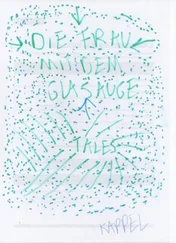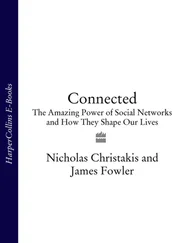Jodorowsky, Alejandro - Psychomagic - The Transformative Power of Shamanic Psychotherapy
Здесь есть возможность читать онлайн «Jodorowsky, Alejandro - Psychomagic - The Transformative Power of Shamanic Psychotherapy» весь текст электронной книги совершенно бесплатно (целиком полную версию без сокращений). В некоторых случаях можно слушать аудио, скачать через торрент в формате fb2 и присутствует краткое содержание. Год выпуска: 2010, Издательство: Inner Traditions Bear & Company, Жанр: Старинная литература, на английском языке. Описание произведения, (предисловие) а так же отзывы посетителей доступны на портале библиотеки ЛибКат.
- Название:Psychomagic: The Transformative Power of Shamanic Psychotherapy
- Автор:
- Издательство:Inner Traditions Bear & Company
- Жанр:
- Год:2010
- ISBN:нет данных
- Рейтинг книги:4 / 5. Голосов: 1
-
Избранное:Добавить в избранное
- Отзывы:
-
Ваша оценка:
- 80
- 1
- 2
- 3
- 4
- 5
Psychomagic: The Transformative Power of Shamanic Psychotherapy: краткое содержание, описание и аннотация
Предлагаем к чтению аннотацию, описание, краткое содержание или предисловие (зависит от того, что написал сам автор книги «Psychomagic: The Transformative Power of Shamanic Psychotherapy»). Если вы не нашли необходимую информацию о книге — напишите в комментариях, мы постараемся отыскать её.
Psychomagic: The Transformative Power of Shamanic Psychotherapy — читать онлайн бесплатно полную книгу (весь текст) целиком
Ниже представлен текст книги, разбитый по страницам. Система сохранения места последней прочитанной страницы, позволяет с удобством читать онлайн бесплатно книгу «Psychomagic: The Transformative Power of Shamanic Psychotherapy», без необходимости каждый раз заново искать на чём Вы остановились. Поставьте закладку, и сможете в любой момент перейти на страницу, на которой закончили чтение.
Интервал:
Закладка:
I often asked myself . . . Because in the end Pachita impressed the disbelievers as well as the followers! What is certain is that she was disposed of an energy superior to the normal. One day, the wife of the president of the Republic of Mexico invited her to a reception given on the patio of the government palace where a number of cages held a great variety of birds. When Pachita arrived, these hundreds of sleeping birds at once woke up and began to chirp as if to greet the dawn. There were a number of witnesses there to confirm this incident. But she did not leave it to her charisma alone. She knew how to create an ambiance around her appropriate to captivating the guest and the patient alike. Her house was kept in semidarkness; thick curtains prevented any light from entering and were so effective that arriving from outside, one was plunged into a world of darkness. Some assistants—all of whom were convinced of the objective existence of the “ hermanito” (little brother), as Pachita had named the spirit that she supposedly contacted and who, in her opinion, worked the healing—led the newcomer down the hall in his sudden blindness. These assistants played, it seems to me, a key role in the smoothness of the “operations.”
You mean to say they helped the sorceress execute the conjuring?
It could be that Pachita was a genius conjurer . . . In fact, it will never be known. What’s for sure is that all these assistants, in the role they played, were not accomplices to trickery; all of them had an immense faith in “the Little Brother.” In the eyes of these brave people, the hermanito was the one that mattered. Pachita was but an excellent healer; a “channel,” as one would say today, an instrument of God. They respected the old lady, but they did not venerate her until she was in trance. For them, the disembodied being was more real than the person in the flesh through which he manifested. This faith by which Pachita was surrounded generated a magic atmosphere, which contributed to persuading the patient of his chances for a cure.
How would an ordinary consultation with Pachita proceed?
Seated in an obscure hall, a group of clients waited their turn to enter the room where the sorceress operated. All the assistants spoke with low voices, like in a temple. At times, one left the “operating room” concealing a mysterious bundle in his hands. He went into the bathroom, and by the half-opened door, those in the waiting area could see the glow of a burning object. The assistant came out and murmured, “Do not go in there before the evil is burned. As long as it is active, it is dangerous to approach. You could catch it.” What was this “evil”? The waiting clients didn’t know anything, but knowing they had to hold their urine as long as the immolation lasted created a strange impression. Little by little, they were leaving consensus reality, to topple over into a completely irrational parallel world. Then suddenly, from the operating room, four assistants appeared carrying an inert body wrapped in a bloodstained cloth. They put the body down like a corpse. Indeed, once the operation was over and the bandages in place, Pachita required the patient’s absolute immobility for a half hour—or sudden death. Fearing being crushed by magic forces, the recovering patients do not make even the slightest movement. Immobile as a rock, they definitely appear dead. It goes without saying that this clever staging puts the next candidate into a state. When Pachita calls in a deep voice, always using the same expression, “It is now your turn, darling child of my soul,” that generally makes them shake and regress into childhood. In this sense, this sorceress does not treat adults but children, and all are treated as such, whatever their age. I once saw her give a bonbon to a minister and ask him in a serious and tender voice, “What hurts you, my little boy?” People give up body and soul to her, taking her as an antidote for their terror.
You have described the ambiance and the preliminaries, which is certainly very important; but I would like to know how the operation itself proceeds in general. As “assistant,” you were a privileged witness.
Only up to a point, because I was, like the others, captivated by the magical ambiance! Pachita always had the patient lie on a cot, by the light of a candle, because the internal organs in her opinion faced damage from electric lights. She marked the place on the body where she was going to “operate” and surrounded it with alcohol-soaked cotton. The odor filled the room, enhancing the “operating room” atmosphere. The healer was always followed by two helpers—I was often one of these two assistants—as well as half a dozen followers who were forbidden to cross their legs, arms, or fingers, so that energy could circulate freely. At her side, I saw her finger sink almost entirely into the eye of a blind man . . . I watched her “change the heart” of a patient: with her hands, she seemed to open his chest; the blood ran . . .
She made me plunge my hand into the wound. I felt the flesh wriggle, and I withdrew my fingers, bloodied. From a jar to the side, I passed her a heart from who knows where—from the morgue or the hospital—that she “transplanted” to the patient in a magical way. Soon after being placed on the chest, the heart seemed to be absorbed and disappeared just like that, as if inhaled by the body of the patient. This phenomenon of “inhalation” was common with all of the “transplants”: she would place a piece of intestine on the person being operated on and no sooner would it disappear into him. I saw her open a head and put her hands in it. There was an odor of burning bone, the sounds of liquid . . . The operations were not lacking in violence and constituted a rather shocking show, in Mexican fashion, but Pachita showed, at the same time, an extraordinary softness.
What was the role of the followers present?
The sorceress relied on their presence. Should an operation seem to be going badly, both Pachita and the patient would solicit the active help of all the people present.
Can you give me an example?
I remember an operation during which El Hermanito screamed sharply from Pachita’s mouth, “The child is getting cold! Quick, heat the air or we are going to lose him.” A second later, we were all running, on the verge of hysteria, in search of an electric heater. As soon as we plugged it in, we realized the electricity was out! “Do something or the child is going to be in agony!” growled the Little Brother, while the patient, on the verge of cardiac arrest from actually seeing his stomach opened and the guts in the air, whimpered, frozen in terror, “My brothers, I beseech you, help me!” And we all gathered around and put our mouths against his body, blowing on it with all our might, worried, forgetting about ourselves, trying frantically to warm him with our breath. “Very good, my children, my dears,” the Little Brother cried suddenly. “The temperature is back up, and the danger is passed. I can continue.”
Did you ever lose a patient?
No. To my knowledge, Pachita has never killed a person while trying to heal him, even if the operations often had critical moments. That seemed in a certain way to be part of the process.
Did the patients suffer?
In general, yes. The operations could be painful. When Pachita died, her gift was transferred to her son Enrique, who operates like his mother. When I assisted him, I noticed that the hermanito spoke more sweetly and that the knife no longer caused pain.
I remarked about this to one of the assistants who responded, “From incarnation to incarnation, El Hermanito makes progress. He has learned recently to not make his patients suffer.”
Читать дальшеИнтервал:
Закладка:
Похожие книги на «Psychomagic: The Transformative Power of Shamanic Psychotherapy»
Представляем Вашему вниманию похожие книги на «Psychomagic: The Transformative Power of Shamanic Psychotherapy» списком для выбора. Мы отобрали схожую по названию и смыслу литературу в надежде предоставить читателям больше вариантов отыскать новые, интересные, ещё непрочитанные произведения.
Обсуждение, отзывы о книге «Psychomagic: The Transformative Power of Shamanic Psychotherapy» и просто собственные мнения читателей. Оставьте ваши комментарии, напишите, что Вы думаете о произведении, его смысле или главных героях. Укажите что конкретно понравилось, а что нет, и почему Вы так считаете.












